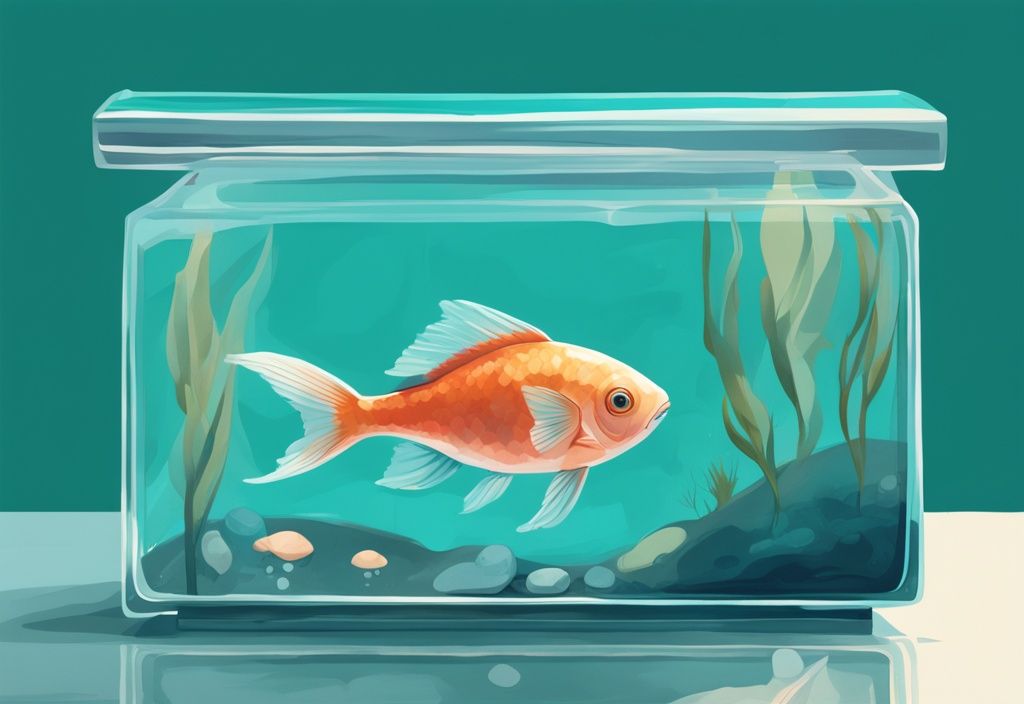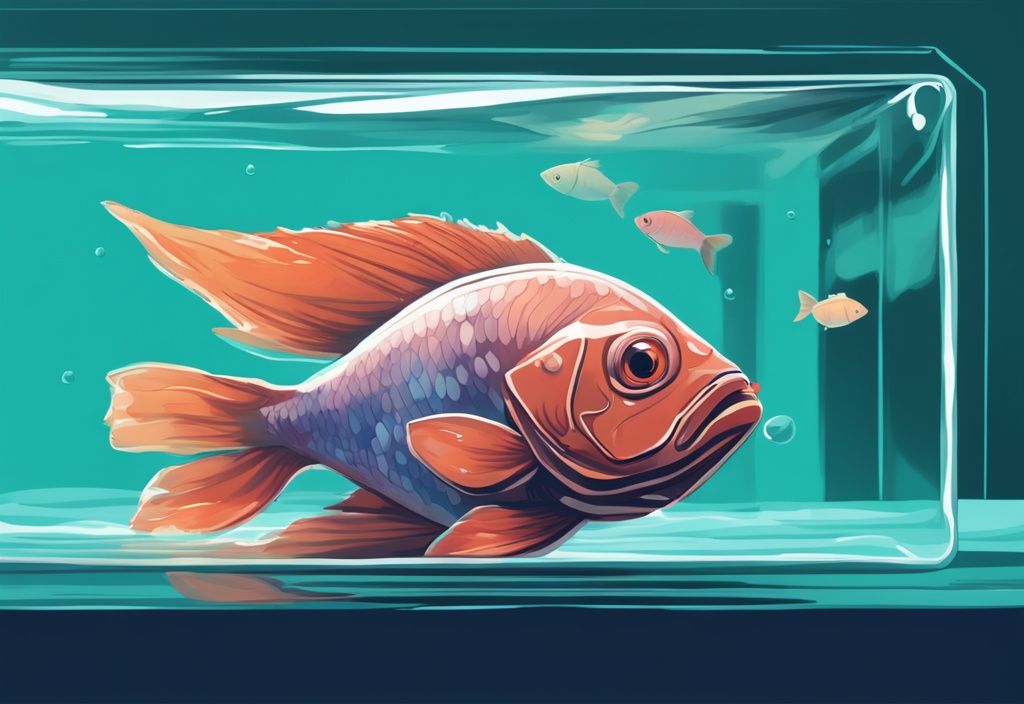Ever wondered just how long you can keep your new gilled friends in a bag before moving them into a tank? As a marine biologist who’s been navigating the depths of underwater life for over two decades, I’ve learned that timing is everything. As aquarium lovers, it’s our responsibility to ensure a stress-free transition for our aquatic companions.
In this comprehensive guide, we’ll delve into the intricacies of acclimating your fish suitably, including the ideal duration to keep them bagged before introducing them into their new home. We’ll also explore key steps to prevent potential health issues and reduce stress, making this journey as smooth as possible for your fish. Read on, dear aquarists. Our underwater pals are counting on us!
Why It’s Essential to Understand the Fish Acclimation Process
Transporting fish in a bag can cause significant stress, making proper acclimation crucial for their health. When fish move from their original habitat to a new one, they undergo various changes that can be distressing. The acclimation process helps mitigate these stresses by gradually introducing the fish to the new water conditions, including adjustments in temperature, pH levels, and water quality. Abrupt changes can be fatal.
Proper acclimation does more than just reduce immediate stress; it plays a vital role in preventing long-term health issues. The shock from sudden environmental changes can lead to illnesses or even death. By understanding and implementing a thorough acclimation process, fish owners can significantly reduce these risks. This ensures that their new aquatic residents settle into their new home comfortably.
The transport process exposes fish not only to different water parameters but also to unfamiliar surroundings. Changes in lighting, sounds, and proximity to new fish populations can be overwhelming. Knowing how long fish should stay in a bag before putting them in a tank is essential. Keeping them in the bag for an adequate period allows the fish to gradually adjust, minimizing stress and promoting overall well-being.
Knowledge of the acclimation process ensures that fish are better prepared to thrive in their new environment. When done correctly, it leads to healthier, less stressed fish, which is the goal of every aquarium enthusiast. Mastering this process is crucial for anyone looking to introduce new fish into their tank successfully.
The Right Duration to Keep Your Fish in the Bag
When you receive your new fish, it’s essential to understand how long they should stay in the bag before putting them in the tank. Ideally, fish should remain in the bag for at least an hour to acclimate properly after their arrival.
This is crucial because the transition process can be highly stressful for them.

Traditional advice often suggests floating the bag for just 15 minutes; however, this is generally insufficient for proper acclimation. Comprehensive acclimation involves not only temperature adjustment but also exposure to the new water conditions, lighting, sound levels, and the presence of existing fish in the tank.
The total acclimation time, which includes both the floating phase and the gradual introduction of tank water into the bag, typically ranges from 30 minutes to 1.5 hours. During this period, you’re helping your fish adjust to the various parameters of their new environment, which significantly reduces the risk of shock and enhances their overall well-being.
Proper acclimation ensures that the fish can better handle changes in temperature, pH, oxygen levels, and other critical water quality factors. By taking the necessary time and steps to acclimate your fish correctly, you are fostering a healthy and stress-free transition to their new home.
Step-by-Step Guide to Acclimating Your Fish
Successfully transitioning your fish from the bag to the tank requires careful attention to detail and patience. Following these steps will ensure your fish remain healthy and stress-free during the acclimation process.
Beginning with Temperature Acclimation
Addressing the temperature difference is crucial in ensuring a smooth transition for your fish. Start by rinsing the exterior of the bag to eliminate any contaminants. Then, carefully pour out some excess water, leaving enough to comfortably cover the fish. With the bag prepped, float it in the tank water for about 10 minutes. This gentle method allows the water inside the bag to gradually match the tank’s temperature, thus minimizing the risk of thermal shock. Make sure the bag remains folded open during this entire period to maximize exposure to the new water temperature.
Gradually Introducing Tank Water
After the initial temperature acclimation, the next critical step involves slowly introducing tank water into the bag. Add small amounts of tank water to the bag every five minutes, incrementally increasing the volume to about three times its original amount over an hour or more. This gradual introduction helps your fish adjust to new pH levels, nutrient concentrations, oxygen content, and salinity. Additionally, it allows them to become acquainted with the hormone and chemical signals from other tank inhabitants, which is essential for a harmonious ecosystem.
Alternatively, the drip acclimation method can be employed. This involves slowly adding small, continuous amounts of tank water to the bag over a set period. This controlled, consistent transition ensures that the fish are not overwhelmed by the new water parameters.
The Proper Technique for Transferring Fish to the Tank
Once the acclimation process is complete, it’s time to transfer your fish from the bag to the tank carefully. Use a net or your hand to move the fish rather than pouring the bag water into the tank. This approach minimizes the risk of introducing potential diseases or pests.
Handle your fish gently to reduce stress, using nets or hands only when necessary to avoid direct contact. After transferring them to their new environment, closely monitor the fish for any signs of stress or health issues such as rapid breathing, erratic swimming, or clamped fins. Observing these indicators allows you to address any potential problems promptly, ensuring the well-being of your fish in their new home.
Understanding Fish Acclimation and Transfer
Handling Larger Fish
When acclimating larger fish, patience and caution are paramount. Due to their size and heightened stress levels, these fish often require extended acclimation periods to adapt fully to their new environment. Allocating sufficient time is essential for a smooth transition, often surpassing the guidelines for smaller species. A methodical and gradual approach is crucial, as it not only minimizes stress but also reduces potential aggression from or towards tank residents. Closely observing their behavior throughout the process will indicate when they are ready for a safe transfer.
Dealing with Sensitive Species Like Corydoras
Corydoras, known for their sensitivity, demand an even more meticulous acclimation process. These species need a slower and more controlled approach to avoid stress-induced complications or mortality. Regularly testing and monitoring water parameters, such as pH, temperature, and salinity, ensures the conditions remain stable and ideal for their well-being. Providing an environment that meets their specific needs, coupled with careful and gradual water acclimation, greatly improves their chances of thriving in their new home. Adequate patience and attention to detail are essential when dealing with these delicate species.

Common Mistakes to Avoid in The Process
Ensuring a smooth and successful acclimation process demands keen attention to detail and avoiding frequent mistakes. Missteps during fish acclimation can lead to stress, shock, or even fatality. Below are some critical errors you should sidestep:
- Avoid transferring fish too quickly: Rapid shifts in water conditions can be highly stressful and shocking for fish. It is crucial to provide sufficient time for fish to acclimate gradually to their new environment.
- Do not dump pet store water into the tank: Introducing store water can introduce diseases or pests. Always transfer fish using a net or your hand, keeping pet store water out of your tank.
- Ensure enough time for gradual water acclimation: Adjusting only the temperature isn’t enough. Gradually mixing tank water into the fish bag helps them acclimate to new pH levels, nutrients, and other parameters, reducing stress levels.
- Monitor fish closely for signs of stress or health issues: Keep a vigilant eye on fish behavior during and after acclimation. Indicators such as rapid breathing, erratic swimming, or a loss of color can signal stress or health issues.
- Avoid overcrowding the bag during transportation: Overcrowded bags can deplete oxygen and increase toxin levels, leading to stress or even death. Ensure each bag has enough space and oxygen for the journey.
Understanding how long do fish stay in a bag before putting them in a tank is crucial. Typically, fish should not remain in bags for prolonged periods. While survival up to 24 hours is possible if packed with oxygen, minimizing bag time by following proper acclimation steps reduces stress. Total acclimation time, which includes both floating and gradually adding tank water, usually ranges from 30 minutes to 1.5 hours. This ensures a seamless transition for your aquatic companions.

Frequently Asked Questions (FAQ)
How long can fish stay in a bag without oxygen?
In my experience, fish can generally endure up to 24 hours in a bag if packed with oxygen. This is a common practice for ensuring their safe transport over long distances. However, it’s not just about the oxygen; maintaining a stable temperature during transport is equally important. Think of it as a comfortable road trip for the fish – keeping them away from extreme conditions minimizes stress and potential harm. For more insights on aquarium care, you might want to explore how baby snails appeared in my fish tank.
Imagine you’re on a long journey in a sealed car without air conditioning. Uncomfortable, right? Fish feel the same way if the temperature isn’t controlled. So, always aim to replicate their optimal environment as closely as possible, even on the go.
Can I put different fish in the same bag during acclimation?
While it’s often acceptable to place different fish species in the same bag during acclimation, meticulous attention to water parameters is non-negotiable. Just like us, fish have their preferred living conditions. Ensuring the water’s pH and salinity are balanced for all species in the bag is crucial to minimize stress and avoid aggression.
Think of it as a shared apartment – everyone’s comfort matters. Regularly monitor these parameters, and remember, patience and vigilance go a long way to ensure a smooth acclimation process.
What are signs that fish are stressed during acclimation?
Recognizing stress in fish is paramount during acclimation.
Common indicators include rapid breathing, erratic swimming patterns, clamped fins, and a noticeable loss of color. It’s akin to how we might react under stress – showing visible signs.
Watching the fish closely during and after acclimation can help you identify and mitigate these issues promptly. Additionally, understanding how to plant aquarium plants can contribute to creating a healthier environment for your fish. Create a serene environment, maintain tank cleanliness, and establish consistent feeding routines. It’s all about making them feel at home as swiftly as possible, much like how a good host ensures their guests are comfortable and relaxed.
Conclusion: Ensuring a Smooth Transfer to Your Fish Tank
Properly acclimating fish to their new environment is critical for their health and well-being. Understanding how long do fish stay in a bag before putting them in a tank is essential for this process. When fish are transported in bags, they experience significant stress due to confinement and changes in water quality. Therefore, a step-by-step acclimation process is necessary to mitigate this stress and help fish adapt to new water conditions gradually.
A comprehensive acclimation routine includes allowing fish to rest in the bag for at least an hour. This period helps them adjust to the temperature and reduces the risk of shock. Traditionally, floating the bag in the tank for 15 minutes has been advised, but studies suggest that more extended periods are beneficial. Total acclimation typically ranges from 30 minutes to 1.5 hours, where the bag is floated and tank water is gradually introduced to the bag.
Careful handling during the transfer is paramount. Using a net or hand, but never pouring the bag water into the tank, ensures that diseases or pests are not introduced. Gentle handling minimizes additional stress on the fish, ensuring they remain calm.
Avoiding common mistakes, such as abrupt transfers or overloading the bag, further ensures a smooth transition.
Continuous observation post-transfer is crucial for identifying any potential health issues. Watch for signs of stress, such as erratic swimming or clamped fins, and provide a calm environment to aid their adjustment. Regular monitoring and prompt intervention can prevent severe health issues, promoting the overall well-being of your fish.
